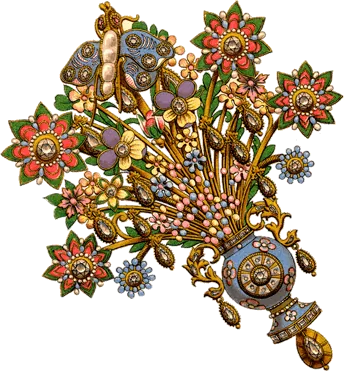Part 1 of a 5 part series covering one aspect of the levitical purity laws: A synopsis of one the most misunderstood symptoms described in the Torah and how it informs our reading of the Gospels.
Introduction
Yeshua answered and said to them, “Go and tell John the things which you hear and see: The blind see and the lame walk; the lepers are cleansed and the deaf hear; the dead are raised up and the poor have the gospel preached to them. And blessed is he who is not offended because of me.”
– Matthew 11:4-6 NKJV[1]
The miracles of Yeshua have long been a source of strength and inspiration for believers of every cultural context. Somehow, we all see ourselves in these stories, as broken and imperfect vessels thirsty for healing and hungry for redemption. The believer can testify that the same touch that restored sight to the blind and healed the leper 2,000 years ago, still transforms hearts, and elevates tired souls wherever the gospel is preached.
Yet, behind every story is a realism that anchors each account to its sobering context: Sitting in a Roman prison, John awaited execution at the hands of a foreign occupier and wondered why the one he acclaimed as Messiah had not rescued God’s people from the intense suffering of exile. In response to John’s confoundment, Yeshua offered assurance by the miracles he had performed among his people. Centuries earlier, the Prophet Isaiah spoke of the wonders that would herald the redemptive era:[2]
Say to them that are of a fearful heart[3]: ‘Be strong, fear not’;
Behold, your God will come with vengeance,
With the recompense of God He will come and save you.
Then the eyes of the blind shall be opened,
And the ears of the deaf shall be unstopped.
Then shall the lame man leap as a hart, And the tongue of the dumb shall sing;
For in the wilderness shall waters break out,
And streams in the desert.
Yeshua’s response expounds on two passages in Isaiah, 35:4-6 and 61:1-2. In reference to both, Yeshua omits important aspects pertaining to judgment and the divine retribution that the prophet predicted would meet the nations.[4] In regard to the signs of redemption, Yeshua also omits an important function of the redeemer’s role: “To proclaim liberty to the captives.”[5] John would have understood the implication of Yeshua’s message thoroughly – Although he was the Messiah, he would not be the instrument of divine retribution at that time. In place of these words, Yeshua adds a cryptic condolence, “blessed is he who is not offended because of me.”
History has chosen not to preserve John’s reaction to Yeshua’s response, but one thing is certain – the words of Yeshua did not reach his ears the same way it speaks to modern believers. For John, the baptizer knew that he would not experience deliverance from the predicament that instigated his inquiry. What about the miracles themselves? How were they received? While the historicity of Yeshua’ miracles are largely undisputed, controversy surrounding his methods and the manner in which he healed have long been a subject of controversy and debate even as they were in his own day: “This Man is not from God, because He does not keep the Sabbath (John 9:16);” and – “Why does this man speak blasphemies like this? Who can forgive sins but God alone? (Mk. 2:7).” Somehow, at the center of every healing seems to be an element of legal and social tension.
In Matthew 11:4-6, Yeshua describes six signs that the Messiah will perform upon his arrival: The blind will see, the lame will walk, the lepers will be cleansed, the deaf will hear, the dead will be raised, and the poor will receive the good news. While these events have been recounted for centuries, the healings that receive the least amount of publicity and stir up the most confusion are those that call into question Yeshua’s relationship to the biblical laws of purity. That given, the focus of this study will be to investigate the halachic (legal) implications of Yeshua’s social interactions with lepers, and to show how the issue, when read through the eyes of their own time, informs our reading of the gospels. Central to our query will be the controversy surrounding the leper’s healing: “Yeshua put out His hand and touched him, saying, ‘I am willing; be cleansed (Mat. 8:3).’”
What were the immediate ramifications of this gesture? And why does the issue of “touching the leper” continue to obfuscate biblical scholars today? In order to understand this topic and its importance to biblical law, it is necessary to investigate the cultural and historical context of the laws concerning the leper. As we conduct our investigation, it is important to remember the response sent to John regarding similar matters: “Blessed is he who is not offended by me.” Yeshua’ warning can be taken as both an assurance for his time and a foreboding of the mixed sentiments that often meet his miraculous healings.
Footnotes:
[1] C.f. Luke 7:22
[2] Isaiah 35:4-6 JPS.
[3] אמרו לנמהרי לב – lit., Say to those of hasty [impatient] heart. According to Rabbi David Altschuler of Prague (1687-1769), the verse refers to those who are impatient for the advent of redemption (Metzudat David). Rabbi David Kimchi (1160-1235) suggests that the verse offers surety to those “startled of heart” by the great troubles suffered in exile (Radak). Both explanations are adequate to summarize John’s anxiety in Mat. 11:3.
[4] Yeshua excludes the vengeance described in Isa. 35:4 and 61:2.
[5] Isaiah 61:1.


